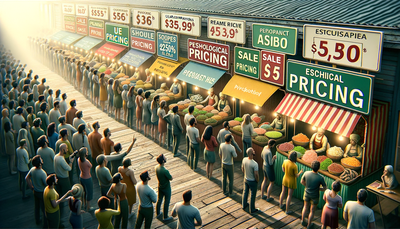The Psychology of Scrolling: Designing for User Engagement
In the digital age, user engagement is paramount for website success. One crucial aspect of this engagement is scrolling behavior. This article delves into the psychology behind scrolling and provides insights on designing websites that encourage and reward this action. We'll explore various techniques, including visual cues, scroll-triggered animations, and content structuring, all aimed at maintaining user interest and enhancing the overall browsing experience. By understanding the psychological factors that drive scrolling behavior, web designers can create more engaging, interactive, and user-friendly websites that keep visitors scrolling and coming back for more.Table of Contents:

The Importance of Scrolling in Web Design
Scrolling has become an integral part of the modern web experience. As users navigate through websites, the act of scrolling allows them to discover more content and engage with the site on a deeper level. Effective scrolling design can significantly impact user engagement, time spent on site, and overall user satisfaction.By encouraging scrolling, designers can create a more immersive and interactive experience, leading to increased conversions and better retention rates. Understanding the psychology behind scrolling behavior is crucial for creating websites that not only look great but also function intuitively and keep users engaged throughout their visit.
Do you need a website? Want to build a website but don't know where to start? Our website builder is the perfect solution. Easy to use, and with the ability to customize to fit your business needs, you can have a professional website in no time.
Visual Cues: Guiding Users to Scroll
One of the most effective ways to encourage scrolling is through the use of visual cues. These subtle design elements can guide users' attention and indicate that there's more content to be discovered below the fold. Some popular visual cues include:1. Arrows or chevrons pointing downward
2. Partially visible content at the bottom of the screen
3. Animated elements that draw attention downward
4. Text prompts like 'Scroll to explore'
By strategically placing these cues throughout the page, designers can create a natural flow that encourages users to continue scrolling and exploring the content. It's important to use these cues sparingly and in context to avoid overwhelming or distracting the user from the main content.
Scroll-Triggered Animations: Adding Interactivity
Scroll-triggered animations are a powerful tool for creating engaging and interactive websites. These animations are activated as the user scrolls, adding a dynamic element to the browsing experience. Some effective uses of scroll-triggered animations include:1. Revealing content gradually as the user scrolls
2. Parallax effects that create depth and dimension
3. Progress indicators that show how far the user has scrolled
4. Animated infographics that come to life as they enter the viewport
When implemented correctly, these animations can make the act of scrolling more rewarding and encourage users to explore the entire page. However, it's crucial to strike a balance between interactivity and performance, ensuring that the animations don't slow down the site or become distracting.
Building a website with SITE123 is easy
Content Structuring: Maintaining User Interest
The way content is structured on a page plays a significant role in encouraging scrolling and maintaining user interest. Effective content structuring techniques include:1. Using a clear hierarchy with headings and subheadings
2. Breaking up long text into shorter, easily digestible paragraphs
3. Incorporating visual elements like images, videos, or infographics
4. Implementing a storytelling approach that unfolds as the user scrolls
By presenting content in an engaging and easily scannable format, designers can keep users interested and motivated to continue scrolling. It's also important to ensure that the most crucial information is presented early on, while still providing value throughout the entire page to reward continued scrolling.
Infinite Scrolling vs. Pagination
When designing for scrolling behavior, it's important to consider the pros and cons of infinite scrolling versus pagination. Infinite scrolling can be effective for content-heavy sites like social media platforms or news aggregators, as it allows for seamless content discovery. However, it may not be suitable for all types of websites.Pagination, on the other hand, provides clear endpoints and can be more appropriate for goal-oriented tasks or when users need to find specific information quickly. The choice between infinite scrolling and pagination should be based on the type of content, user goals, and overall site structure. In some cases, a hybrid approach combining elements of both methods may be the most effective solution.
Mobile Considerations for Scrolling Design
With the increasing prevalence of mobile browsing, it's crucial to consider how scrolling behavior differs on smaller screens. Mobile users are typically more accustomed to scrolling, but they also have less screen real estate to work with. Some mobile-specific considerations for scrolling design include:1. Ensuring touch targets are large enough for easy interaction
2. Implementing 'sticky' navigation elements for easy access
3. Optimizing content for vertical scrolling
4. Using lazy loading to improve performance on mobile devices
By tailoring the scrolling experience for mobile users, designers can create websites that are engaging and easy to navigate across all devices.





